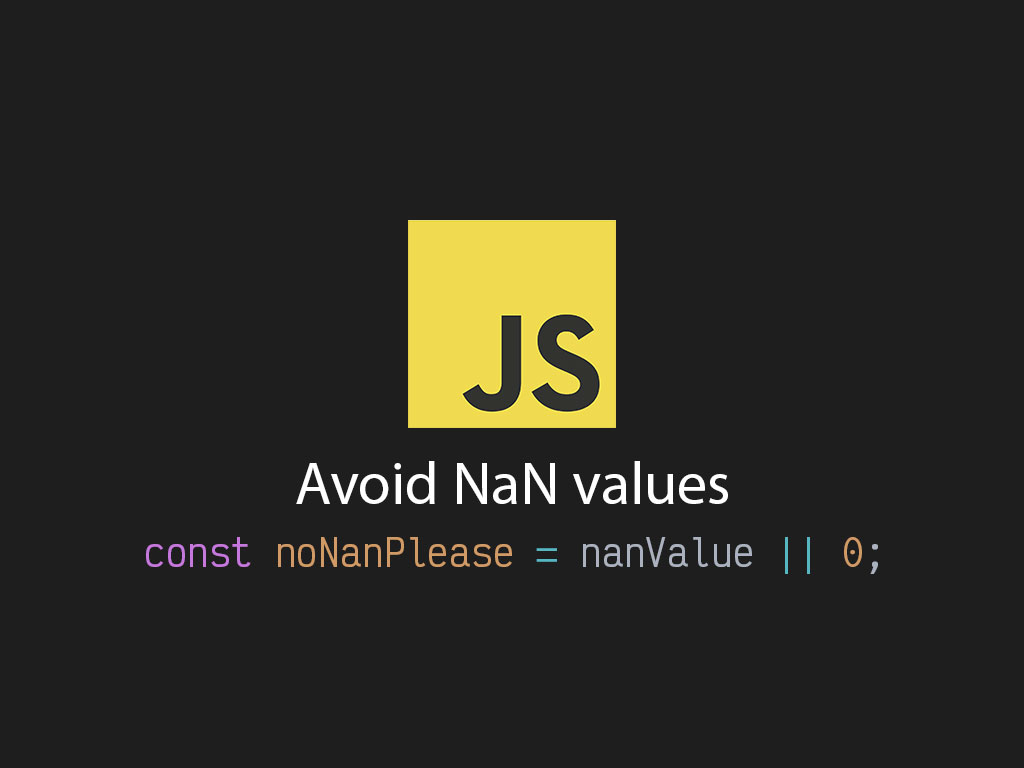How to avoid NaN in JavaScript

Are you getting a NaN errors?
Here are 4 methods to avoid NaN values.
Avoid #1: Mathematical operations with non-numeric string values
In JavaScript you can execute mathematical operations with numeric string values.
// Subtracting
const a = "10" - "10"; // 0
// Multiply
const b = "10" * "10"; // 100
// Division
const c = "10" / "10" // 1
But what if the string value is non-numeric?
const y = 5 * "Apples"; // NaN
Than NaN gets produced.
To avoid it completely, it’s best if you do all your mathematical operations with numbers.
Sometimes stringed values may come back from an API, just check if the value is NaN in the first place.
isNaN("5") || 0
Avoid #2: Mathematical operations with functions
Doing mathematical operations with a function will result in a NaN value.
function fooBar() {
// ...stuff
}
fooBar * 5 // NaN
Avoid #3: Mathematical operations with objects
Doing mathematical operations with a JavaScript object will result in a NaN value.
const obj = {};
obj * 5 // NaN
Avoid #4: Mathematical operations with falsy values
Avoid doing mathematical operations with falsy values such as:
undefinedNaNnullfalse- empty string (
"")
Just avoid it.
const a = undefined + 5; // NaN
const b = NaN / 5; // NaN
const c = null - 5; // -5. Null behaves like a 0.
const d = false * 5; // -5. False behaves like a 0.
const e = "" + 10; // 10. Empty string behaves like a 0.
Conclusion
Stick to doing mathematical operations with number type values.
Here’s a fallback option that will convert your falsy value to 0.
const a = nanValue || 0; // Converts false to value 0
I like to tweet about JavaScript and post helpful code snippets. Follow me there if you would like some too!
